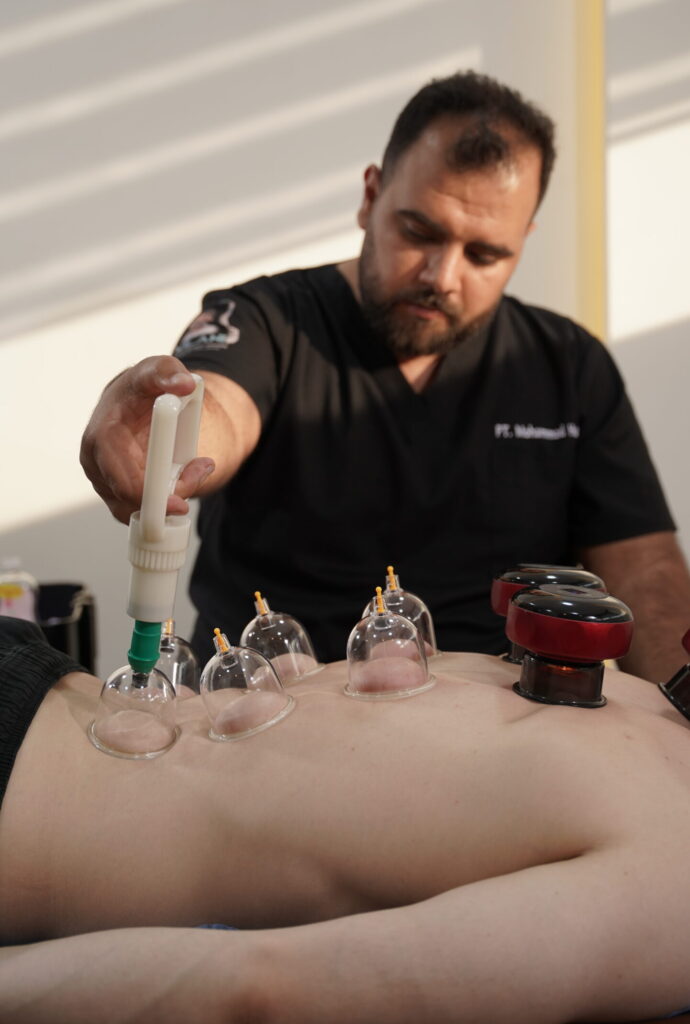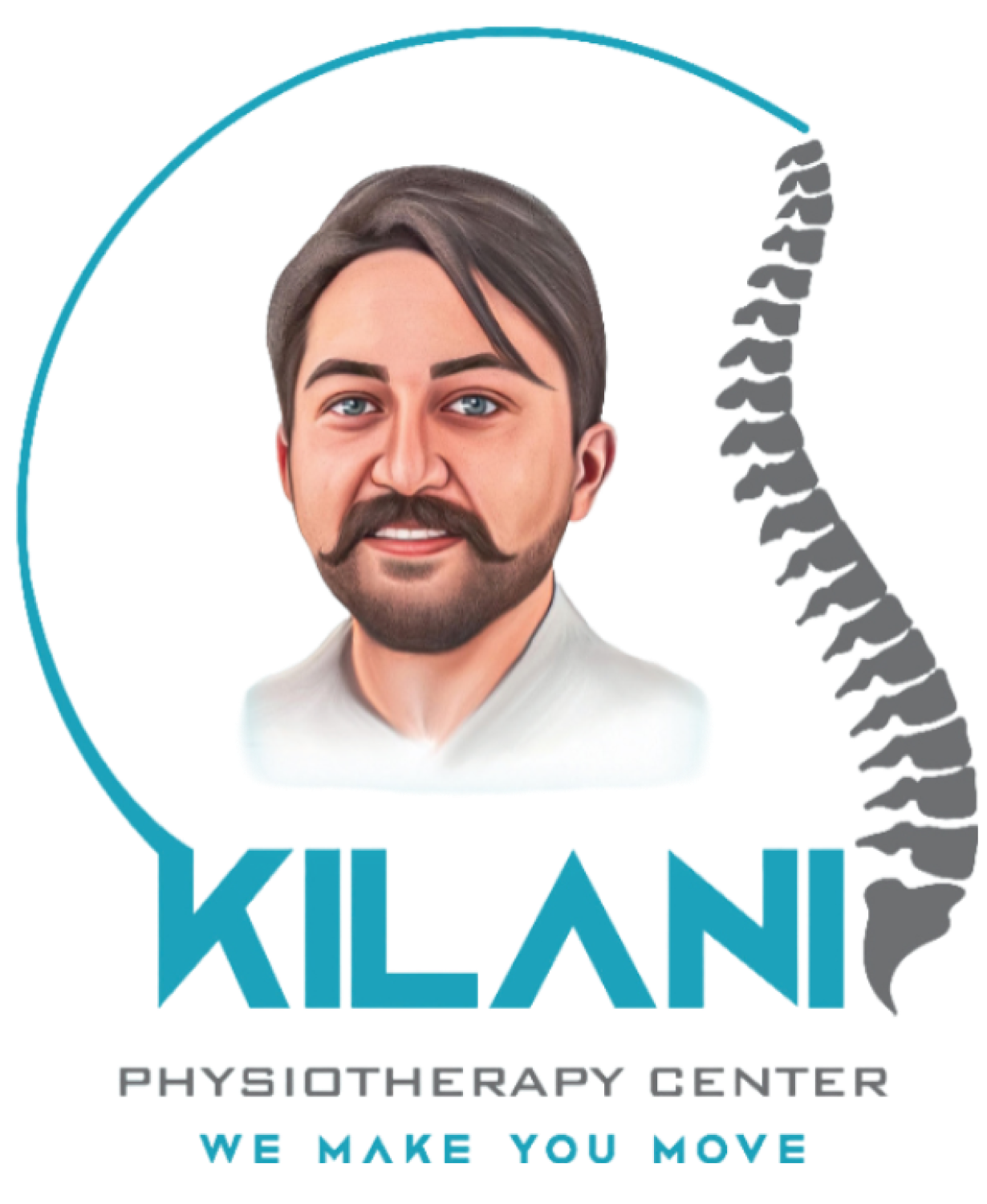Cupping Therapy in Physiotherapy
Kilani
January 27, 2025

Introduction
Cupping Therapy in Physiotherapy is a form of alternative medicine that involves placing cups on the skin to create suction. It is often used in physiotherapy as an adjunctive treatment to alleviate pain, reduce muscle tension, and promote circulation.
When to Use Cupping Therapy in Physiotherapy
Cupping therapy can be beneficial for:
Musculoskeletal Conditions:
These are the most conditions we use cupping therapy with in kilani physiotherapy center
Chronic back pain
Neck and shoulder tension
Myofascial pain syndrome
Joint pain (e.g., knee osteoarthritis)
Soft Tissue Injuries:
Muscle strains
Ligament sprains
Trigger points
Post-Surgical Rehabilitation (with caution):
To improve mobility and reduce scar tissue adhesions
Sports Recovery:
To reduce muscle soreness and improve flexibility
Stress-Related Issues:
For patients with high tension due to stress
Procedure for Using Cupping Therapy
Preparation:
Hygiene: Ensure proper sterilization of cups and a clean treatment area.
Assessment: Identify areas needing treatment through palpation and patient history.
Types of Cups Used:
Glass
Silicone
Plastic (with suction pumps)
Types of Cupping Techniques:
Dry Cupping: Creates suction without using any incisions.
Wet Cupping: Involves small incisions on the skin to remove stagnant blood (rarely done in physiotherapy).
We do it in kilani physiotherapy center in sessions alone separated from other physiotherapy techniques and it’s has some precautions differ from dry cupping
Moving Cupping: Cups are gently moved across the skin with a lubricant.
Steps for Dry Cupping:
Apply a thin layer of oil or cream to the skin to ensure a proper seal.
Place the cup on the target area.
Create suction by:
Using a vacuum pump (manual or electric), or
Heating the air inside the cup and placing it quickly on the skin.
Leave the cups in place for 5-15 minutes, depending on patient tolerance.
Aftercare:
Remove the cups gently to avoid skin damage.
Massage the treated area to soothe any residual discomfort.
Advise the patient to hydrate and avoid intense activities immediately afterward.
Shapes and Types of Cups Used in Cupping Therapy
Cups used in cupping therapy come in various shapes and materials, each designed for specific purposes and body areas. Round cups are the most common and are used for static or stationary cupping on larger muscle groups like the back, shoulders, and thighs. Oval-shaped cups are ideal for areas with irregular contours, such as around joints or along the neck. In terms of materials, cups can be made of glass, which is commonly used for fire cupping due to its heat resistance, silicone, which is flexible and suitable for moving or dynamic cupping, and plastic, often used with vacuum pumps for dry cupping as they allow for precise control of suction. Some therapists also use bamboo or ceramic cups for traditional methods, although these are less common in modern physiotherapy. In kilani physiotherapy center we also use electrical cups with infrared heating which is new technique. The choice of cup type and shape depends on the treatment area, technique, and patient’s needs, ensuring effective and comfortable therapy.
Contraindications
Cupping therapy should be avoided in the following situations:
Skin Conditions:
Open wounds, rashes, or infections
Active eczema or psoriasis
Medical Conditions:
Blood clotting disorders (e.g., hemophilia)
Severe anemia or low platelet count
Uncontrolled hypertension or heart disease
Pregnancy:
Avoid on the abdomen and lower back.
Acute Inflammation or Injury:
Avoid directly over areas with active inflammation or swelling.
Fever or Illness:
Avoid treating during febrile conditions or systemic infections.
Caution with Children and Elderly:
Fragile or sensitive skin.
Complications of Cupping Therapy
While generally safe, some potential complications include:
Skin-Related Issues:
Bruising (normal but can be significant if over-applied)
Skin irritation or burns (if fire cupping is improperly done)
Blisters (with excessive suction)
Pain or Discomfort:
Muscle soreness in the treated area
Infections:
Rare, but can occur if hygiene protocols are not followed
Scar Tissue Formation:
Possible with repeated wet cupping
Conclusion
Cupping therapy is an effective modality when used appropriately in physiotherapy. Careful assessment, proper technique, and attention to contraindications can maximize its benefits and minimize risks.
If you like to try it or if you have any condition that may need to use cupping therapy on, please contact us on our phone numbers in our both branches in Amman or Dubai or you can contact us as DM in our pages on social media apps.
